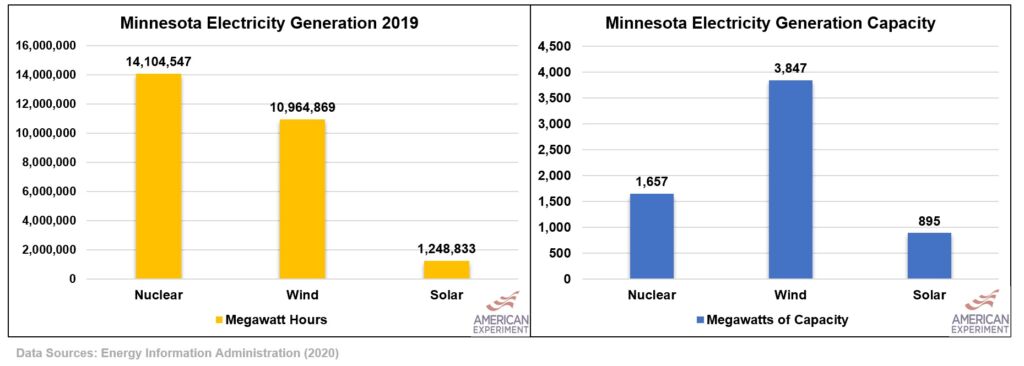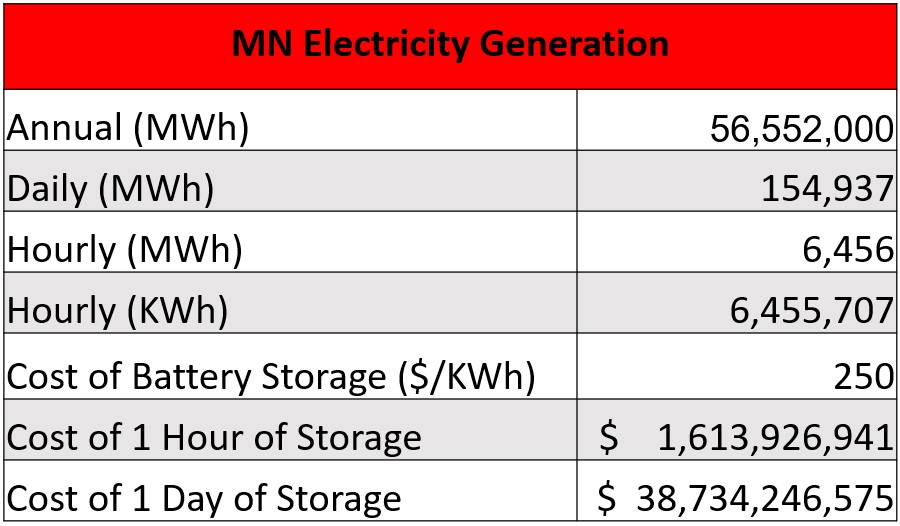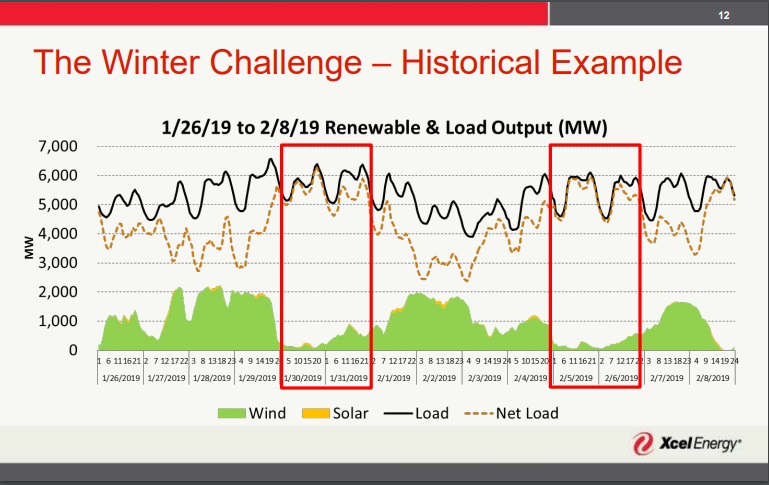This DFL Senator has a lot to learn about energy
Last week, American Experiment discussed how only two DFL Senators voted to legalize new nuclear power in Minnesota, even though nuclear power plants are far more reliable and productive than wind turbines and solar panels, which even renewable energy advocates concede are “reliably unreliable.”
During the floor debate on whether to lift the state’s ban on new nuclear power plants, Senator Jason Rarick (R-Pine City) spoke in favor of legalizing new nuclear power. Sen. Rarick correctly stated that a new nuclear power plant made of small, modular nuclear reactors would give energy-intensive industries such as the iron mining and paper mill industries the reliable electricity they need and cut down on transmission costs.
Afterward, Senator Ann Johnson Stewart (DFL-Plymouth) said she was “horrified” at “the idea of a nuclear plant in our mining area.” Unfortunately, Senator Johnson Stewart made several factual errors in her remarks about nuclear power, and how the electric grid works that necessitate a thorough vetting.
I would encourage you to watch the video below to see how the two Senator’s framed their debate points below.
Costs
Sen. Johnson Stewart begins her remarks by claiming that small modular reactors would cost $10 billion. This statement is not correct.
According to Power Magazine, the actual cost of the 720-megawatt (MW) small, modular nuclear power plant that NuScale is planning to build at the Idaho National Labs site is $6.1 billion. This sum is the “all-in cost” of the plant over 40 years, including inflation, financing, and decommissioning.
$6.1 billion is a hefty sum, but much less than the $10 billion cited by Sen Johnson Stewart.
It also bears mentioning that Minnesota has spent more than $15 billion on wind turbines and solar panels, and these sources of electricity still produce less electricity than nuclear power, despite there being 2.3 times more wind capacity than nuclear capacity in Minnesota.

Battery storage would also be required to back up wind and solar. However, one day’s worth of storage in Minnesota would cost approximately $38.7 billion at today’s cost. It’s also important to remember that this figure does not account for the cost of building the wind turbines and solar panels needed to charge the batteries.

This could build 4,567 MW of small, modular nuclear power capacity, which could provide much more electricity than a single day of battery storage. In fact, this new nuclear power capacity, in addition to our existing nuclear plants, would generate enough electricity to make Minnesota’s electricity mix 92 percent carbon-free.
Social Acceptability
Sen. Johnson Stewart asserts that Minnesota could not build a new nuclear power plant because she would not want one in her backyard. She also asserts that she is “pretty certain” none of the other 67 Senators serving in the Minnesota State Senate would want one in their backyard, either.
There are two issues with this statement. One, it assumes other communities would not want a new nuclear power plant, and two, it does not consider the fact that there is strong opposition to wind turbines and solar panels in rural areas.
Many communities would likely be hesitant to permit a new nuclear plant. Still, several communities in Minnesota would likely welcome one, especially Bayport, Becker, and Cohassett, that will see the coal-fired power plants in their communities close down in the next 15 years. These coal plants account for much of their local tax revenue, and jobs at these power plants are among the highest-paying jobs in the area.
If these communities are presented with an option to retain their tax base and high-paying jobs, they will likely seriously consider a new nuclear power plant.
There is also growing pushback against new wind and solar developments throughout Rural America. In fact, nearly 300 local governments from Vermont to Hawaii, including some in Minnesota, have restricted wind and solar development.
Given that there will likely be some level of opposition to both nuclear power and wind and solar, we need to examine which one makes the most sense to build. Nuclear power plants produce far more energy on much less land. This means finding willing communities in which to build new nuclear power plants could run into less local opposition than thousands of megawatts of solar spread throughout the state.

Sen. Johnson Stewart is right on South Carolina and Georgia nuclear plants
Senator Johnson Stewart is correct when she says that nuclear power projects in South Carolina were abject failures, and the plants under construction in Georgia have been boondoggles, taking much longer to build than projected and far over budget.
Johnson Stewart misspoke when she stated the plant cost was only $28 million when it has cost $28 billion, but people familiar with the matter understood what she meant.
One reason the Vogtle plants have been such epic failures is that they are the first new nuclear plants built in the United States in the last 30 years. As a result, much of the institutional knowledge that all industries rely upon is now gone. Complicating things further is the lack of a standardized reactor design that is replicated over and over again. As a result, new nuclear power plants in the United States run the risk of costing more and taking longer to build.
In other countries, however, nuclear power plants use a standardized design and can be built much faster and for less cost. South Korean firms are building large nuclear power plants using the APR 1400 design in the United Arab Emirates, and China is building 17 nuclear power plants with 18,500 MW of capacity. This is enough nuclear capacity to power three Minnesota’s.
Small, modular reactors could also avoid the pitfalls of Georgia because they have a standardized design, which will help scale production and develop mature supply chains. These are the same types of arguments the wind and solar industries used to keep their subsidies ten years ago. Of course, they still get billions of dollars in federal subsidies today.
Nuclear Isn’t the Only Option, But it is Probably the Best One
Johnson Stewart says we are kidding ourselves if we believe that nuclear energy is the only option for meeting our energy needs, citing the fact that Minnesota has wind, solar, natural gas, and hydroelectric power as evidence that new nuclear power plants are unnecessary.
Nuclear power plants may not be our only option to meet our future energy needs, but they are probably the best alternative once our coal plants are shut down.
Wind and solar are only able to generate electricity when the weather is cooperating. Unfortunately, that means these energy sources are often unavailable when we need them most.
The graph below shows electricity generation on Xcel Energy’s system during the 2019 Polar Vortex, and a regular day in February. As the graph shows, wind and solar output (shown in green and yellow below) dipped dramatically during these two days.

The lack of wind and solar generation meant that our coal, nuclear, and natural gas power plants needed to shoulder the heavy lifting of keeping our electric grid reliable. Coal and nuclear plants are especially valuable during frigid temperatures because they can store weeks or months of fuel on-site, and unlike natural gas power plants, they do not compete for fuel with home heating users.
As coal plants are retired, they are often replaced with natural gas power plants. During the Polar Vortex of 2021, which led to blackouts in 15 states, falling gas production in Texas and competition for natural gas sent home heating prices soaring, resulting in additional costs of up to $400 per household.
Rising home heating costs are bad, but blackouts are much, much worse. Texas experienced rolling blackouts in February because they are too reliant upon wind and natural gas for electricity generation. If a small portion of the Texas wind fleet had been nuclear instead of wind, they probably could have kept the lights on.
Importing more hydropower from Canada is a good option for Minnesota, but other than that, nuclear power provides superior resiliency attributes when compared to wind, solar, and natural gas. It also provides important diversity for our fuel supply, which helps keep our system strong.
Round Two
After her initial testimony, Sen. Johnson Stewart took to the podium to correct the record on the cost of the Vogtle nuclear plants under construction in Georgia. However, in returning to the podium, she also made more factual errors in her comments.
Johnson Stewart sought to “correct” statements made by Senator Andrew Mathews (R- Milaca), who correctly noted that natural gas shortages perpetuated the blackouts in Texas by reducing the amount of gas available to generate electricity.
Johnson Stewart displayed that she does not understand what happened in Texas, confidently chiding Sen. Mathews and stating that it was the electric grid, and not the natural gas supply chain, that experienced problems.
This is simply untrue. The electric grid had problems because of the natural gas supply chain problems and low wind speeds that greatly reduced output from wind turbines. Some natural gas lines froze because the grid operator shut off power to the pumping stations, and there is nothing misleading about that.
Solar Slipup
The most embarrassing slip-up on Johnson Stewart’s part was when she began to talk about solar power. Johnson Stewart stated, “Solar energy actually does work, even when the sun’s not shining. Today we have a cloudy day. I’m certain that all of you would pretty much bet that if we turned off all of those beautiful LED lights, we’d still be able to see because solar energy is here 24 hours a day, we just can’t see it.”
It’s not clear what Sen. Johnson Stewart is saying here, because this is not how solar energy works.
Solar panels work by turning sunlight into electricity. When the sun sets, solar panels stop producing electricity. We can see this in California using hourly data from the California grid operator. Solar electricity generation is zero at 6 AM and increases to 13,000 MW from around 10 AM to 3 PM. By 8PM solar is again producing no electricity.

As a result, solar panels produce energy for about 13 hours per day, not 24 hours per day, an important difference.
Johnson Stewart’s experience as a civil engineer probably makes her uniquely qualified to speak about transportation and construction issues, but in this case, it appears her background has made her overly confident about something about which she still has a lot to learn.
By keeping nuclear plants illegal in our state, we limit our options and pick losers instead of winners. This is a mistake, and it will result in a grid that is more expensive, less reliable, and less carbon-free than a grid powered by nuclear. It will be the worst of all worlds.